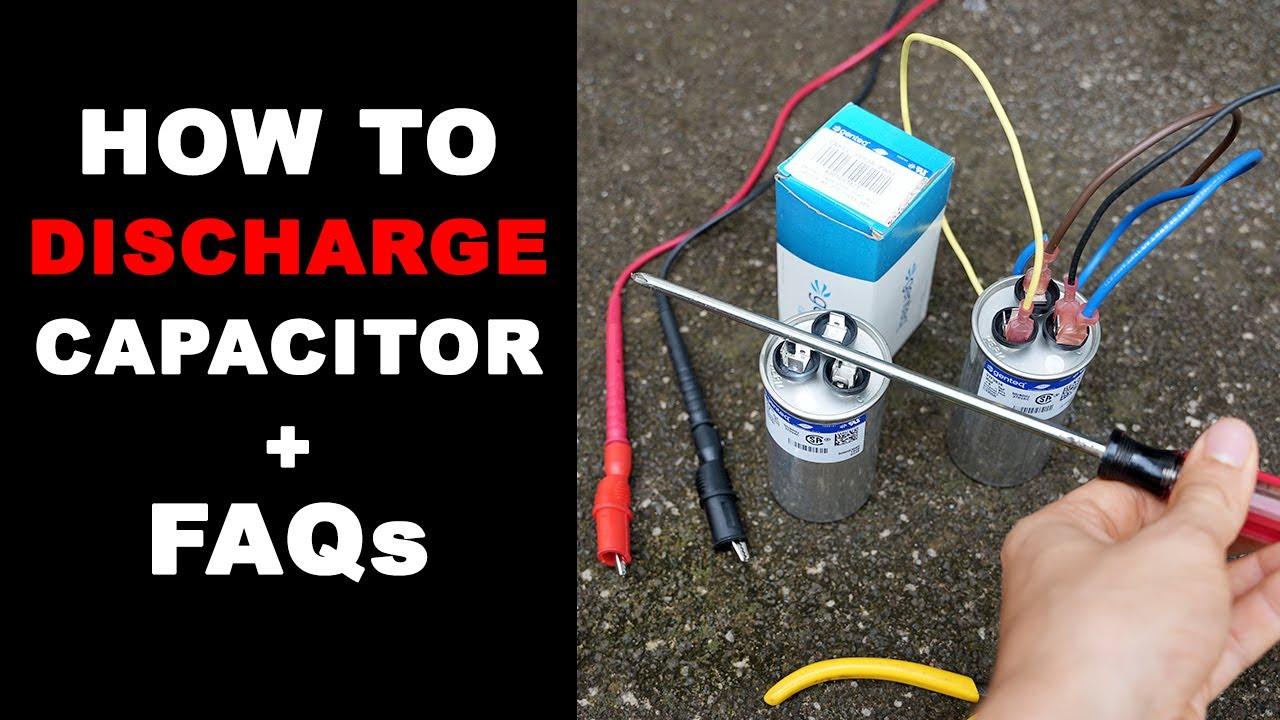What is the Correct Way to Discharge a Capacitor?
Discharging a capacitor is a crucial safety step in electronics, particularly when working with high-voltage circuits. The correct method involves using a resistor to create a path for the stored electrical charge to dissipate gradually. By connecting a resistor across the terminals of the capacitor, the energy stored within it can be safely discharged without causing damage or injury. Helpful resource: https://www.wikihow.com

image source: https://www.youtube.com/watch?v=45oZXnClMD0
Can You Discharge a Capacitor with a Multimeter?
While a multimeter is a versatile tool for measuring voltage, current, and resistance, it is not the ideal device for discharging a capacitor. Multimeters typically have a limited discharge capability and may not provide sufficient resistance to discharge capacitors safely, especially in high-voltage circuits. It's safer and more effective to use a dedicated resistor for this purpose. Helpful resource: https://m.youtube.com/watch?v=S3p3ZSPHJTs
What is the Best Resistor to Discharge a Capacitor?
When selecting a resistor to discharge a capacitor, it's essential to consider the capacitor's capacitance and the desired discharge time. A resistor with a higher resistance value will result in a slower discharge, while a lower resistance value will discharge the capacitor more quickly. Generally, a resistor with a value between 100 ohms to 1 kilohm is suitable for discharging most capacitors safely. Helpful resource: https://www.electronicshub.org
How Do You Automatically Discharge a Capacitor?
In certain applications, especially those where capacitors are used for energy storage or power backup, it may be necessary to ensure automatic discharge when the power is turned off. One common method involves using a bleeder resistor connected in parallel with the capacitor. This resistor provides a continuous discharge path, gradually dissipating the stored energy even when the circuit is inactive. Helpful resource: https://forum.allaboutcircuits.com/threads/discharging-a-capacitor-automatically.78413/
How Long Does It Take for a Capacitor to Self-Discharge?
Capacitors naturally self-discharge over time, with the rate of discharge depending on factors such as capacitance, voltage rating, and temperature. Generally, smaller capacitors with lower capacitance values will discharge more quickly than larger capacitors. For electrolytic capacitors, which are commonly used in electronic circuits, the self-discharge time can range from a few seconds to several minutes, depending on their size and construction. Helpful resource: https://byjus.com
In conclusion, understanding how to safely discharge a capacitor is essential for anyone working with electronic circuits. By following proper procedures and utilizing appropriate components, the risk of accidental shocks or damage to equipment can be minimized. Whether manually discharging capacitors during maintenance or implementing automatic discharge mechanisms in circuit design, prioritizing safety is paramount.
Facts Checked by Hugh Johnson
Hugh Johnson stands tall in the realms of both the chip industry and the electronic parts industry, earning acclaim as an esteemed expert in these fields. With an extensive background steeped in semiconductor technology, Hugh's expertise transcends chip design and fabrication, encompassing a profound understanding of electronic components' intricate functionalities and applications. His seasoned knowledge spans diverse facets, from microchip architecture and fabrication techniques to the broader landscape of electronic parts utilized across industries.









